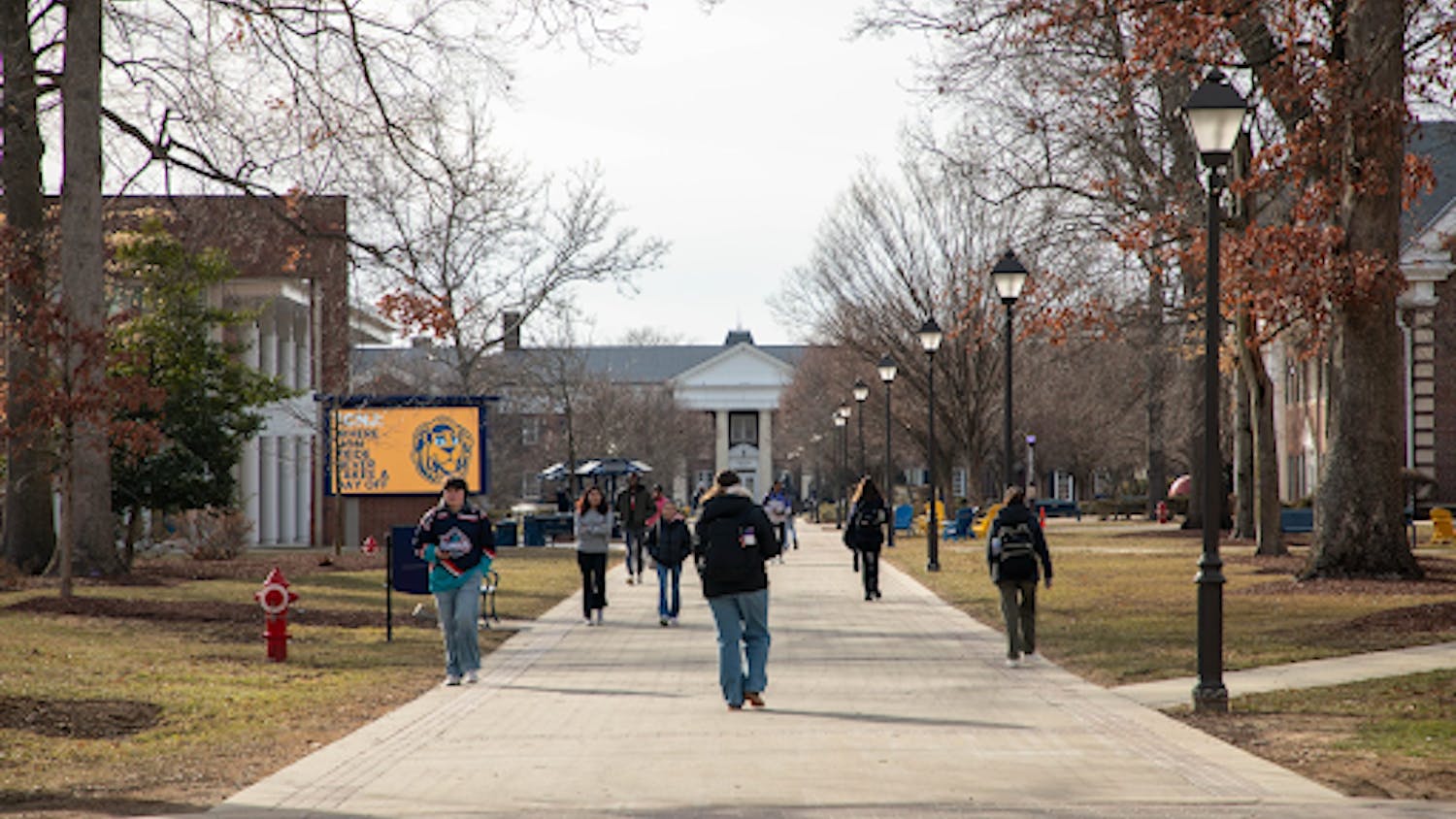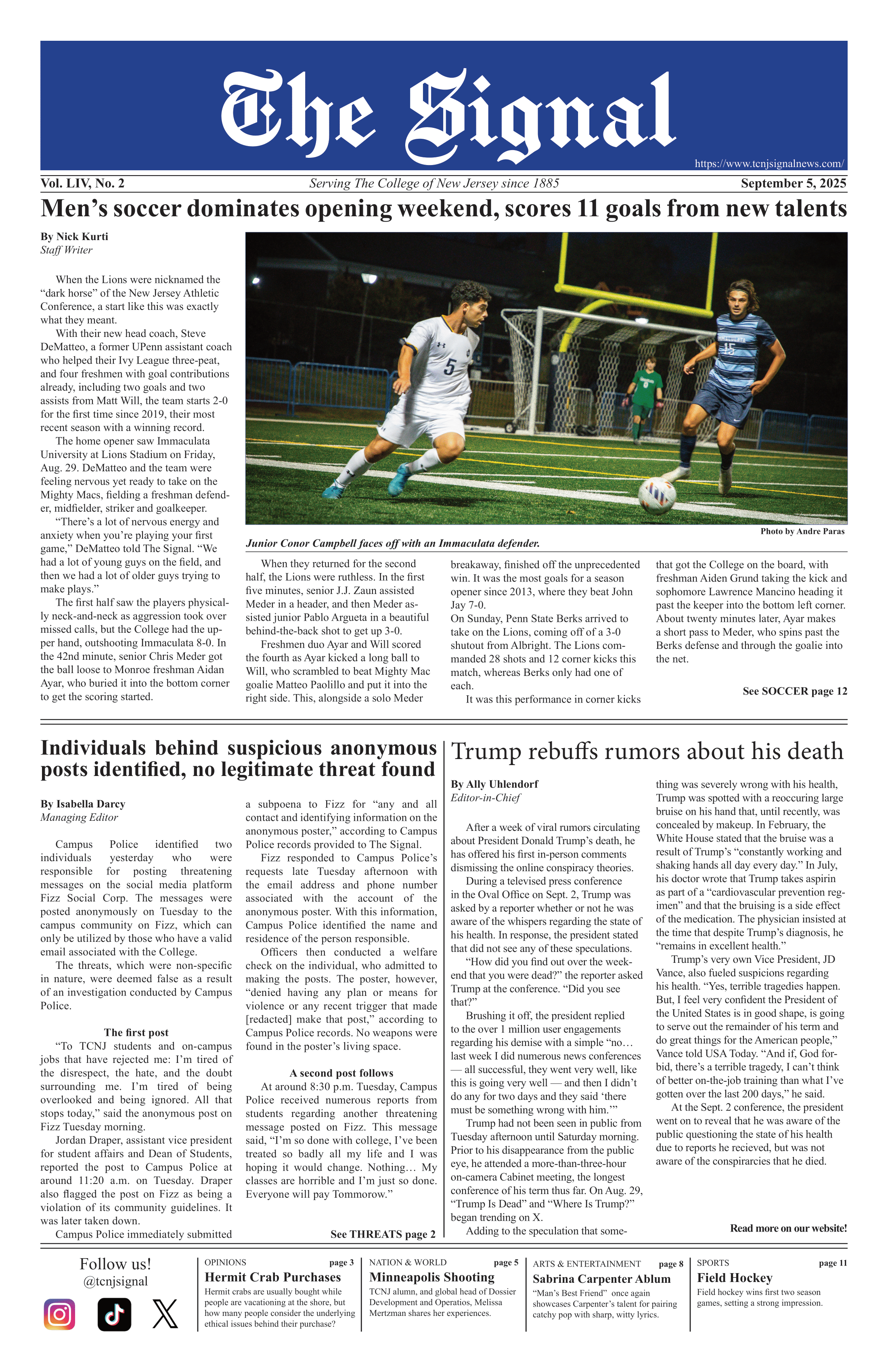USA Today approached the College on Feb. 6 to implement its Collegiate Readership Program, which would make USA Today, The New York Times and The Times of Trenton available to students at the College. However, the company that owns USA Today has reportedly acquired student newspapers on at least two university campuses where the Collegiate Readership Program has been accepted, as reported by The New York Times and the Inside Higher Ed Web site.
Gannett, USA Today's parent company, has purchased two university newspapers and has discussed the possibility of purchasing another with the administration of Colorado State University.
Gannett currently owns FSView & Florida Flambeau, the
student papers serving Florida State University, and Central Florida Future, the student paper serving the University of Central Florida.
The Associated Press reported on Jan. 22 that The Coloradoan, a Gannett newspaper located in Fort Collins, Colo., had proposed a "strategic partnership" to run the student newspaper at Colorado State University, The Rocky Mountain Collegian. Talks between university administrators and The Coloradoan regarding The Collegian's purchase did not include student staff members of The Collegian.
According to Jeanne Fetner, regional education manager for USA Today, "Gannett did not purchase the Colorado student newspaper."
Ronald Spielberger, executive director of College Media Advisers, a group that aids student media, said USA Today and other newspapers offered as part of the Readership Program could impact a college publication's revenue source by utilizing student-oriented advertising content.
"These people go say to advertisers, 'We have this many students lined up where we're getting access to that campus and we're willing to sell you national advertising in a section specifically targeted to campus each week,'" Spielberger said.
He added that this encroaches on a student paper's "national advertising potential."
Fetner said relationships between the Readership Program and college publications have been used to facilitate on-campus distribution of the student publications. She said the program is intended to promote awareness of what's going on outside of campuses for students.
She said the two Florida publications acquired by Gannett were previously owned by for-profit companies that ran student newspapers.
"Gannett owns a variety of local publications throughout the country," she said. "We don't have an overall strategy for purchasing student newspapers."
Mark Goodman, Knight Chair of Scholastic Journalism at Kent State University, said the implementation of the Collegiate Readership Program at the College would not likely result in a Gannett acquisition of The Signal.
"(The Program) hasn't put the student newspaper out of business or really significantly harmed it because the reality is students produce better content for their audience than these commercial organizations are able to," Goodman said.
Spielberger agreed.
"I don't really see them going in trying to buy or eliminate your college newspaper," he said.
Christine Cullen, executive president of Student Government Association (SGA) said SGA might reconsider bringing the program.
"If USA Today didn't completely and utterly deny that they would even try to mingle with what our student newspaper does, then I'd say SGA's opinion would change," she said.
Sean Stallings, director of Residential Education and Housing, currently oversees the Readership Program's potential implementation at the College.
"We certainly don't want to disenfranchise any student organization or anything that's going to develop a student. We only want to add value," Stallings said. "Certainly it would not be our intention to just bring in or introduce a competitor."
Stallings said he is currently considering whether or not to commit to the Readership Program in order to obtain a four-week pilot program.
"In order to get the pilot program, you have to commit to a contract," he said. "It pretty much means they're giving me a discount off of the contract. They're not giving me a pilot. A pilot is something you try out."
If the contract is signed, Stallings' office is prepared to fund the Readership Program for the remainder of this semester. At the end of the pilot, if it is contracted, students will be surveyed to see if they would be willing to continue paying for the service.
Frank LoMonte, executive director of the Student Press Law Center (SPLC), said SPLC would be concerned with corporate ownership of papers if it was being used to deny students' rights.
"Our interest in corporate ownership of (student) papers is only to make sure that there's not a situation where corporate ownership is being used as a subterfuge to deny students their rights or to deny their right to run their own paper," he said.
Goodman said the Readership Program, which serves over 480 colleges and universities, is intended to create younger readers.
"The Readership Program is directed at building both readership and circulation," he said.
Goodman said the Readership Program is also a way of securing future newspaper readers. In a time when newspaper circulation numbers are on the decline, the Readership Program could potentially rejuvenate the faltering print media industry.
"Everybody wants to get more college students reading newspapers, hoping that that will become a life-long habit for them," Goodman said.
Spielberger said that introducing the program to the College, USA Today would be able to claim an additional 5,600 readers. This enables newspapers to charge higher rates to its advertisers.






